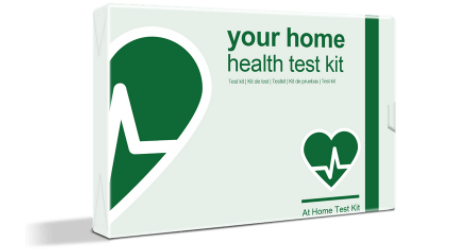Struggling to lose weight but can’t work out why? The underlying cause might not be your diet. When we talk about weight loss, we often use a simple metric: calories in versus calories out. Unless you are in a calorie deficit, meaning you are burning more calories than you consume, you will not lose any weight.
But what happens when you’re definitely in a calorie deficit, but your weight is static or increasing? Isn’t that impossible?
Well, the answer might be an underlying food intolerance. Food intolerances and weight loss struggles are closely connected. Here’s why.
What is a Food Intolerance?
A food intolerance is similar to an allergic reaction. It occurs because the body’s immune system activates in response to a particular foodstuff . The body releases IgG4 antibodies and calls up its immune cells to defend against the perceived threat.
Unlike an allergic reaction, this doesn’t occur immediately. It can take hours or even days for symptoms to appear, making it difficult to identify the trigger.
Symptoms of a food intolerance include:
- Bloating
- Gas
- Diarrhoea
- Constipation
- Abdominal pain
- Nausea
- Rashes
- Itching
- Fatigue
- Headaches
- Irritability
- Muscle aches
- Joint pain
Symptoms are often vague and systemic. For example, muscle aches and joint pain can be attributed to old age or an exercise session. Another characteristic symptom is gradual weight gain. You may not have changed your diet, but still continue to put on weight. The amount of weight you put on is usually related to how much of the trigger food you consume.
How Does Weight Loss Work?
Usually, weight loss works on the simple difference between the calories you consume and the calories you burn. If you consume more than you burn, your body will begin to store the excess calories as fat. On the other hand, if you burn more than you consume, you should begin to lose weight.
In 99% of people, this relationship holds true. You should always try to lose weight the conventional way before considering other options. Simple ways to lose weight include decreasing portion sizes, eating less calorie-dense foods, exercising more, walking instead of driving, and turning down the thermostat (your body burns calories to stay warm).
The Link Between Food Intolerances and Weight Loss
So, if weight loss is normally just a balance of energy burned and consumed, what’s going on with food intolerances? How is it possible that your weight could remain static?
This is due to a missing ingredient: water.
More than two-thirds of your body is water. It’s stored in your blood, tissues, and other regions. Whenever you have a reaction to a foodstuff, your body increases the storage of water in your tissues. This is caused by signalling molecules like histamine and prostaglandins. The more you enter into this inflammatory state, the more water you retain.
Chronic inflammation not only increases water retention (as part of its protective response), but it also causes localised swelling in tissues surrounding the digestive tract or in extremities.
This hidden source of weight is hard to detect. It’s not affected by the calories you burn, as water is not caloric.
Are You Waterlogged?
Water retention isn’t something we often look for. However, once you know the tell-tale signs, it’s easy to diagnose. Symptoms of water retention include:
- Swelling in ankles, feet, hands, or face
- Sudden weight gain
- Tight, shiny skin or pitting (indents when pressed)
- Joint stiffness or discomfort
- Abdominal bloating
- Heaviness or aching in limbs
If you notice any of these symptoms, it’s crucial that you visit your doctor. Water retention is associated with kidney damage. In fact, it’s one of the only signs that something is wrong with your kidneys. You will need a blood test to ensure there’s nothing wrong with your kidney function.
Detecting a Hidden Food Intolerance
Okay, so your stubborn weight might be caused by a food intolerance. How do we diagnose the problem? Well, while food intolerances and weight loss issues go hand-in-hand, we cannot diagnose purely based on symptoms.
The best solution is a food intolerance test. The Allergy & Intolerance Test examines a small drop of blood for the presence of IgE and IgG4 antibodies. These are present in allergies and intolerances, respectively. The test detects 38 allergies and 79 food-related intolerances, providing a comprehensive overview of your immune response. It’s the gold standard for detecting hidden food intolerances.
How to Lose Weight with a Food Intolerance
The simplest solution if your food intolerance hampers your weight loss is to perform an elimination diet. Remove the foodstuff from your diet and monitor your weight. If you notice any changes, you have confirmed the connection. If not, it could be another issue.
You should also continue your usual weight loss plan. Cutting calories can help tackle your water retention. Here’s how:
- Losing weight (especially by cutting processed food intake) decreases chronic inflammation, which contributes to water retention.
- Reducing carbohydrate intake lowers insulin levels. Insulin promotes sodium retention in the kidneys, which in turn leads to water retention. Lower insulin levels can help the body release excess water.
- Glycogen (stored carbohydrate) is stored in the liver and muscles as it is burned in the early stages of weight loss. Each gram of glycogen is stored with 3-4 grams of water.
- Processed foods are high in salt. Lower salt intake can lead to less water retention as the body retains water to balance sodium levels.


